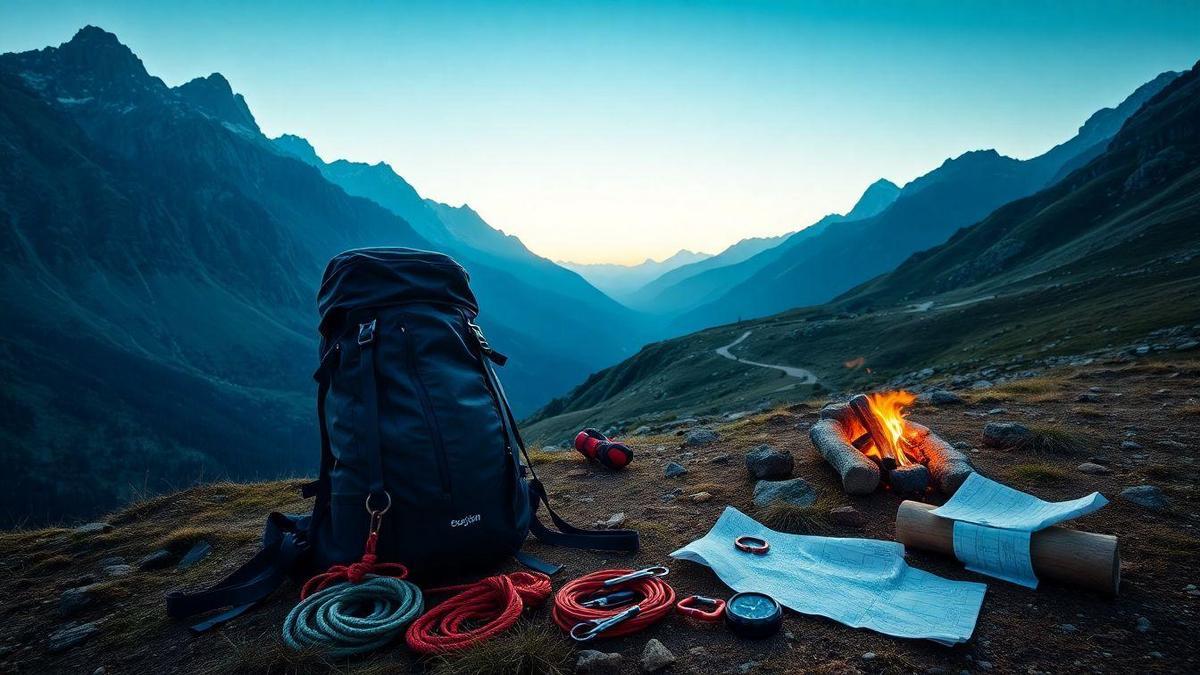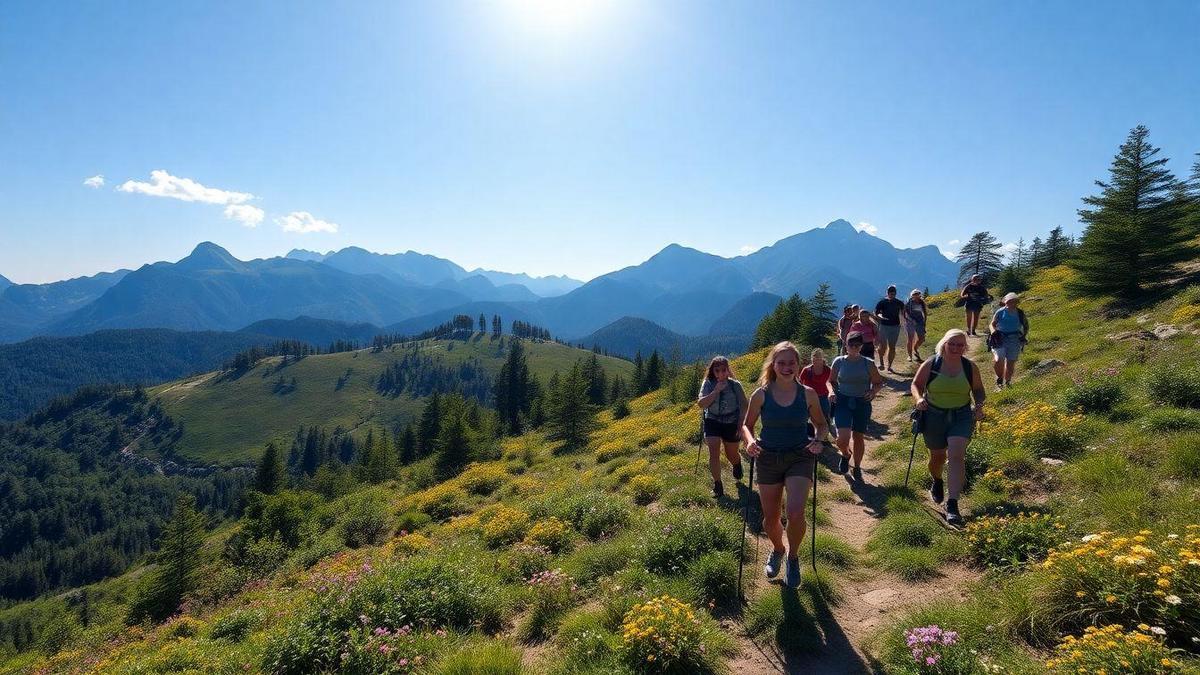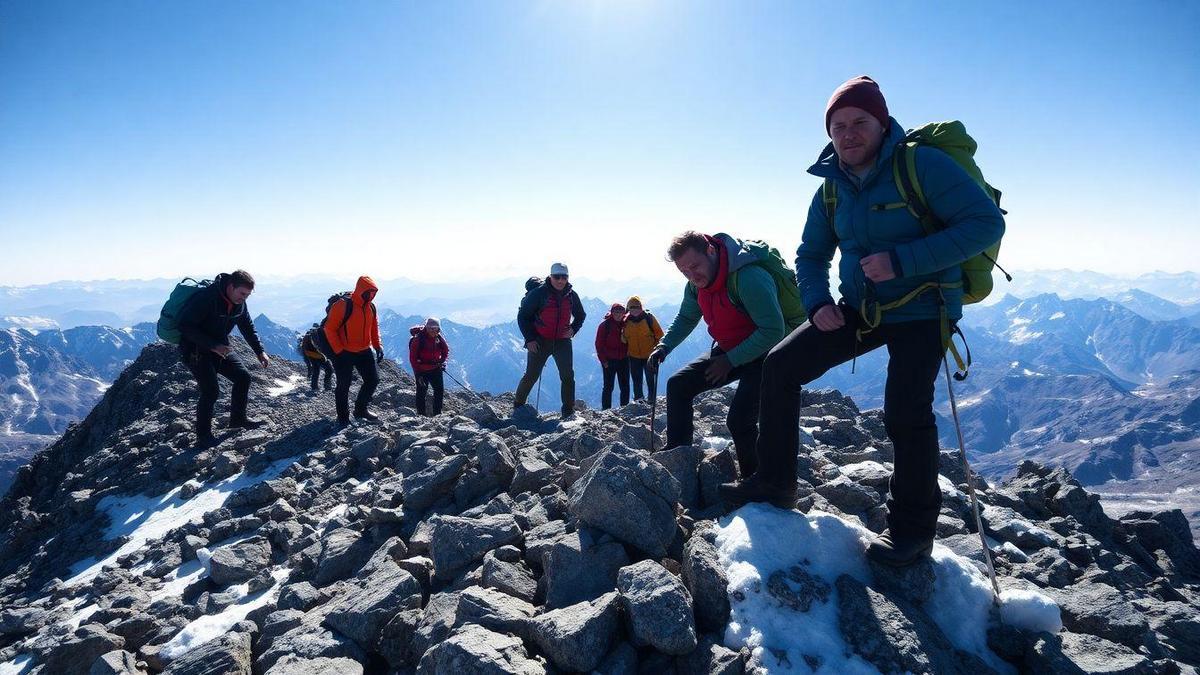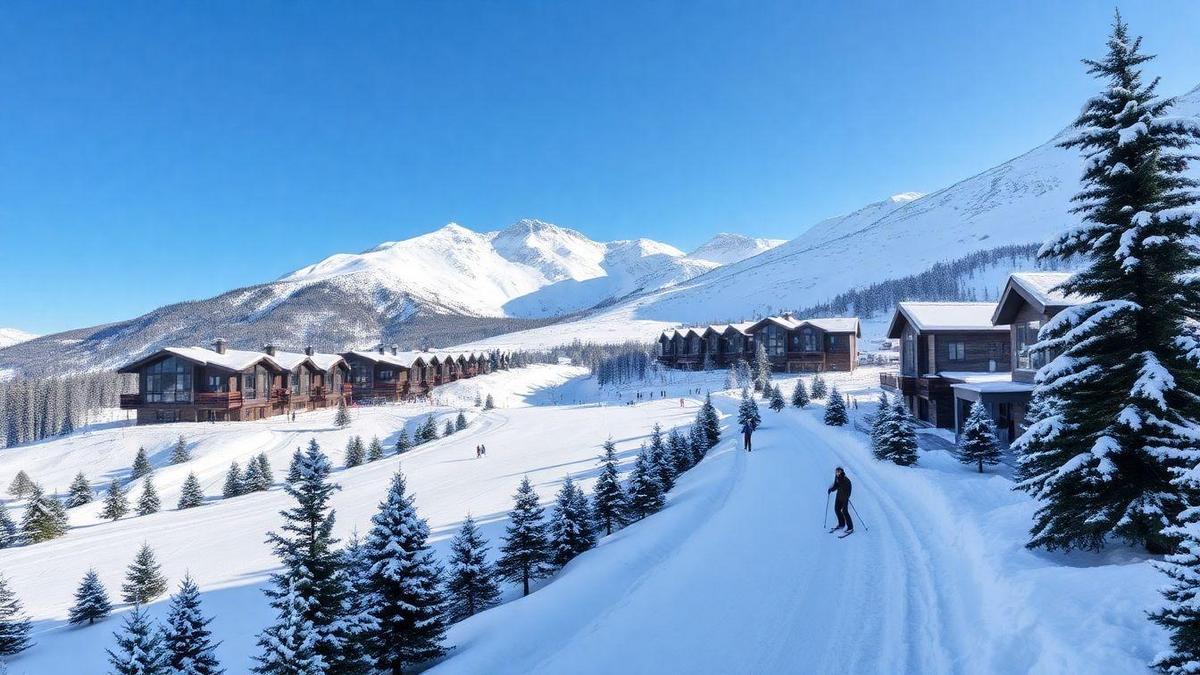
Essential Gear for Your Mountain Climbing Trip
Must-Have Climbing Gear
When you think about climbing a mountain, having the right gear is key. It’s like having the right tools in your toolbox. Here are some essential items you should pack:
- Climbing Harness: This keeps you safe while you climb.
- Carabiners: These handy clips are essential for connecting ropes and gear.
- Ropes: A strong rope is a must for safety.
- Helmet: Protect your head from falling rocks or bumps.
- Climbing Chalk: This helps keep your hands dry for a better grip.
Choosing the Right Footwear
Your footwear can make or break your climbing experience. Think of it like wearing the right shoes for a dance. You want comfort and support. Here’s what to consider:
- Climbing Shoes: These should fit snugly and have a good grip to help you stick to the rocks.
- Hiking Boots: If you’re not scaling vertical walls, sturdy hiking boots with ankle support are great for long treks.
Understanding Climbing Gear Essentials
Understanding what you need is half the battle. Here’s a quick table to help you remember the essentials:
| Gear Type | Purpose |
|---|---|
| Climbing Harness | Keeps you safe while climbing |
| Carabiners | Connects gear and ropes |
| Ropes | Essential for safety |
| Helmet | Protects your head |
| Climbing Chalk | Improves grip by keeping hands dry |
| Climbing Shoes | Provides grip and support |
| Hiking Boots | Offers comfort for long hikes |
With this gear, you’ll be ready to tackle the mountains. Remember, it’s not just about getting to the top; it’s about enjoying the journey and staying safe along the way.
Planning Your Multi-Day Climbing Checklist
What to Pack for a Successful Trip
Packing for a multi-day mountain climb can feel overwhelming. But with the right approach, you can simplify it. Think about what you really need. Here’s a handy list to get you started:
- Clothing:
- Base layers (thermal shirts and pants)
- Insulating layers (fleece or down jacket)
- Waterproof jacket and pants
- Hiking socks
- Warm hat and gloves
- Camping Gear:
- Tent (lightweight)
- Sleeping bag (appropriate for the season)
- Sleeping pad
- Cooking Supplies:
- Portable stove
- Fuel
- Cooking pot
- Utensils
- Food and Water:
- Non-perishable food (like energy bars and dried fruit)
- Water bottles or hydration system
- Water purification tablets or filter
- Safety and Navigation:
- First aid kit
- Map and compass or GPS
- Headlamp with extra batteries
Organizing Your Climbing Gear
Once you have your gear, it’s time to organize it efficiently. This step is crucial. You want to find what you need without digging through your pack. Here are some tips:
- Use Dry Bags: Keep clothes and food dry.
- Pack by Category: Group similar items together. For example, keep all cooking gear in one section.
- Accessibility: Place items you’ll need often at the top of your pack.
Creating a Multi-Day Climbing Checklist
Creating a checklist is a smart move. It helps you avoid forgetting anything important. Here’s a simple table to guide you in making your own checklist:
| Category | Items to Include |
|---|---|
| Clothing | Base layers, Insulating layers, Socks |
| Camping Gear | Tent, Sleeping bag, Sleeping pad |
| Cooking Supplies | Stove, Fuel, Pot, Utensils |
| Food and Water | Non-perishable food, Water bottles |
| Safety Gear | First aid kit, Map, Headlamp |
With this checklist, you can feel confident that you’re ready for your adventure. Remember, preparation is key to enjoying your climb!
Food and Hydration for Climbing Success
Best Foods for Energy on the Trail
When you’re out there climbing, you need fuel that packs a punch. Think about foods that give you quick energy and can keep you going for hours. Here are some great options:
- Nuts and Seeds: High in protein and healthy fats, a handful can keep your energy levels steady.
- Dried Fruits: Sweet and easy to carry, they provide a quick boost of sugar.
- Energy Bars: Look for bars that have a mix of carbs, protein, and fat to keep you energized.
- Jerky: A great source of protein that can be very satisfying.
- Whole Grain Crackers: Provide complex carbs to maintain steady energy.
Staying Hydrated While Climbing
Hydration is key. When you climb, you sweat a lot. If you’re not careful, you can get dehydrated, which can make you feel tired and dizzy. Here’s how to stay hydrated:
- Drink Regularly: Don’t wait until you feel thirsty. Take sips often.
- Use a Hydration Pack: This allows you to drink hands-free while you climb.
- Add Electrolytes: Sometimes, plain water isn’t enough. Adding electrolyte tablets can help replace what you lose through sweat.
Tips for Food and Hydration for Climbing
Here are some handy tips to keep your energy and hydration levels up:
- Plan Ahead: Before your climb, pack your food and water. Think about how long you’ll be out there.
- Lightweight is Key: Choose foods that are easy to carry. You don’t want to lug around heavy snacks.
- Mix It Up: Variety can keep you excited about your food. Don’t just pack the same thing every day.
- Listen to Your Body: If you feel tired or thirsty, take a break. Your body knows what it needs.
Navigating Mountain Terrain Safely
Reading Maps and Using GPS
When you set out to conquer a mountain, knowing how to read maps and use GPS is like having a compass in the wilderness. It helps you find your way and avoid getting lost.
- Topographic Maps: These maps show elevation and landforms, helping you understand how steep the terrain is.
- GPS Devices: A GPS can pinpoint your location, handy when trails are unclear. Just remember, batteries can die, so have a backup plan!
Here’s a quick table to compare the two:
| Feature | Topographic Maps | GPS Devices |
|---|---|---|
| Detail | Shows elevation changes | Real-time location |
| Power Source | No batteries needed | Needs power |
| Ease of Use | Requires map skills | User-friendly |
| Durability | Can get wet or torn | Can break easily |
Understanding Trail Markings
Trail markings are your best friends on the mountain. They guide you along the path. Knowing what these markings mean can save you a lot of trouble.
- Blazes: Painted marks on trees or rocks indicate different trails.
- Signposts: Look for signs at intersections; they tell you which way to go and how far to the next stop.
Remember, if you lose sight of the trail markings, take a moment. Stop, breathe, and look around. Retracing your steps can often lead you back to the right path.
Outdoor Safety Tips for Navigating Terrain
Safety should always be on your mind when you’re out in nature. Here are some tips to keep you safe while exploring:
- Stay Hydrated: Always carry enough water. Dehydration can sneak up on you.
- Dress in Layers: Weather can change quickly. Layers keep you warm or cool as needed.
- Travel with a Buddy: There’s strength in numbers. Plus, it’s more fun!
- Know Your Limits: If a trail looks too tough, don’t hesitate to turn back.
Weather Considerations for Your Climb
Checking Weather Before You Go
Before you lace up your boots and hit the trail, checking the weather is essential. You wouldn’t want to face a surprise snowstorm or heavy rain while climbing. Use reliable weather apps or websites that provide up-to-date forecasts. Look for information on temperature, wind speed, and precipitation. Even a small change in the forecast can make a big difference in your plans.
How Weather Affects Your Climbing Plans
Weather can change your climbing experience from enjoyable to risky. For instance, if you’re planning to climb in the summer, a sudden drop in temperature can lead to frostbite. Conversely, if it’s too hot, you might struggle with dehydration. Understanding how weather affects your climb helps you make better choices.
Key Weather Considerations for Climbing
Here’s a quick table to help you remember the key weather factors to consider:
| Weather Factor | Impact on Climbing |
|---|---|
| Temperature | Affects gear choice and safety |
| Wind Speed | Can increase chill factor and danger |
| Precipitation | Impacts visibility and trail conditions |
| Storm Forecast | May require rescheduling your climb |
Always keep an eye on the forecast as your climb approaches. You want to be prepared for anything Mother Nature throws your way.
Acclimatization Strategies for High Altitude
Importance of Acclimatization
When you set your sights on climbing a mountain, acclimatization is one of the most important steps. As you ascend, the air gets thinner, and your body needs time to adjust. If you rush this process, you might feel nauseous, dizzy, or even experience more serious issues. Think of it like giving your body a chance to catch its breath before the big climb.
Signs of Altitude Sickness
Being aware of the signs of altitude sickness is crucial. Here are some symptoms to watch for:
- Headache
- Nausea or vomiting
- Fatigue
- Shortness of breath
- Loss of appetite
If you notice any of these signs, it’s essential to listen to your body. Ignoring them can lead to more severe health problems. Remember, your well-being is the priority.
Effective Altitude Acclimatization Strategies
To help your body adjust to high altitudes, consider these effective acclimatization strategies:
| Strategy | Description |
|---|---|
| Climb High, Sleep Low | Ascend to a higher altitude during the day, but return to a lower altitude to sleep. |
| Stay Hydrated | Drink plenty of water to keep your body functioning well. |
| Take it Slow | Increase your elevation gradually; don’t rush the climb. |
| Rest Days | Plan days for rest to allow your body to adapt. |
By following these guidelines, you can help your body adjust better and reduce the risk of altitude sickness.
Frequently Asked Questions
What are the key Guidelines for planning a multi-day mountain climbing trip?
The key guidelines include picking the right route, packing light, and checking the weather. Make sure you have enough food and water. Think about safety and always have a first aid kit.
—
How do I choose the right gear for a mountain climbing trip?
Choose gear that is durable and weather-resistant. Look for comfortable climbing shoes. Don’t forget layers of clothing to keep warm and dry.
—
How can I stay safe while climbing for multiple days?
Always tell someone your plan and expected return date. Carry a map and compass, even if you use a GPS. Stay aware of your surroundings to prevent accidents.
—
What should I do if the weather turns bad during my trip?
Find a safe place to wait it out. Check your gear for rain or snow protection. Plan to adjust your route if conditions worsen.
—
How do I manage my food and water on a long climb?
Plan meals ahead and pack high-energy snacks. Drink water regularly to stay hydrated. Consider a portable water filter for streams.
—


